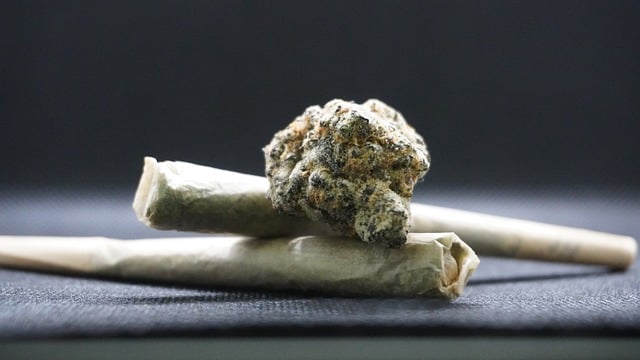The THCA flower, a source of the non-psychoactive cannabinoid THCA which converts into psychoactive THC when heated, has attracted attention for its potential health benefits. To safely and effectively use THCA flower, it's crucial to follow dosage guidelines tailored to individual factors such as body weight, tolerance, and desired effects. A conservative starting dose of 1-5 milligrams of THCA is recommended for new users. Since the method of consumption—whether through edibles or inhalation—can affect the intensity and duration of its effects, it's important to be mindful of this when adjusting dosage. Users should be aware that while mild side effects like dry mouth or red eyes are common at lower doses, higher doses might lead to more severe side effects such as anxiety or paranoia if there's a high level of THC due to decarboxylation. It is essential for those with pre-existing health conditions or who are taking other medications to consult healthcare professionals before using THCA flower. By understanding and adhering to the appropriate dosage guidelines, individuals can mitigate potential adverse effects and maximize the therapeutic properties of THCA flower.
Exploring the nuanced effects of THCA flower, an unrefined form of cannabis known for its potential therapeutic properties, requires a careful examination of its chemical composition and the body’s interaction with it. This article delves into the multifaceted aspects of THCA, elucidating its influence on bodily and mental states, common side effects to anticipate, and individual differences in response. With a focus on THCA flower dosage guidelines, we aim to provide a comprehensive understanding of how to navigate this substance responsibly. By understanding the distinctions between THC and THCA, determining the right dosage, and monitoring one’s response, users can approach THCA with informed caution, ensuring a safer consumption experience.
Understanding THCA Flower and Its Potential Side Effects

THCA, or Tetrahydrocannabinolic Acid, is a non-psychoactive cannabinoid found in raw cannabis plants, which, when heated, converts into the more well-known psychoactive compound THC. The THCA flower, rich in this cannabinoid, has garnered attention for its potential therapeutic properties. However, like any substance, it’s important to understand the appropriate dosage guidelines to minimize side effects and maximize benefits. Typical dosage can vary widely based on individual body chemistry, tolerance, and the specific condition being treated. It is generally recommended to start with a low dose and gradually increase as needed, always within the bounds of legal regulations.
While THCA flower is generally considered safe, it’s not without potential side effects. Some users may experience mild side effects such as dry mouth, red eyes, or dizziness at higher doses. These are typically temporary and can be mitigated by staying hydrated and using the substance responsibly. More severe side effects are less common but can include anxiety, paranoia, or psychoactive effects if too much THC is present due to the conversion from THCA upon heating. It’s crucial for consumers to consult with a healthcare provider before incorporating THCA flower into their wellness routine, especially if they have pre-existing health conditions or are taking other medications. Understanding THCA flower dosage guidelines and potential side effects ensures informed use and supports the pursuit of its therapeutic benefits responsibly.

Throughout recent years, interest in cannabinoids has grown significantly, with Tetrahydrocannabinolic Acid (THCA) gaining attention for its potential therapeutic properties. THCA is a non-psychoactive precursor to the well-known psychoactive compound delta-9-tetrahydrocannabinol (THC). Flower containing high levels of THCA is increasingly being used for various reasons, including health and wellness purposes. When incorporating THCA flower into one’s regimen, it is crucial to adhere to dosage guidelines to avoid adverse effects.
Proper dosing is pivotal when consuming THCA flower due to its potency. Dosage guidelines vary based on individual factors such as body weight, tolerance, and the desired effect. Generally, it is recommended to start with a low dose, approximately 1-5 milligrams of THCA, and assess one’s response over time. This cautious approach allows users to gauge their sensitivity and adjust their intake accordingly. It is also important to consider the method of consumption, as edibles or smoked forms will have different onset times and durations of effect. Adhering to THCA flower dosage guidelines ensures a safer experience and helps in maximizing the potential benefits associated with this cannabinoid. Users should always consult with a healthcare professional before starting any new substance and be aware that individual experiences can vary significantly.
In considering the role of THCA flower in various wellness routines, it is imperative to approach its inclusion with cautious deliberation. The article has outlined key insights into understanding THCA flower and its associated side effects, emphasizing the necessity for adherence to dosage guidelines. Users are advised to consult with healthcare professionals before incorporating THCA flower into their regimen, as individual sensitivities may vary. A prudent understanding of THCA flower’s potential impacts is crucial for safe and effective use. This exploration underscores the importance of responsible consumption and the need for ongoing research to further elucidate its effects.
